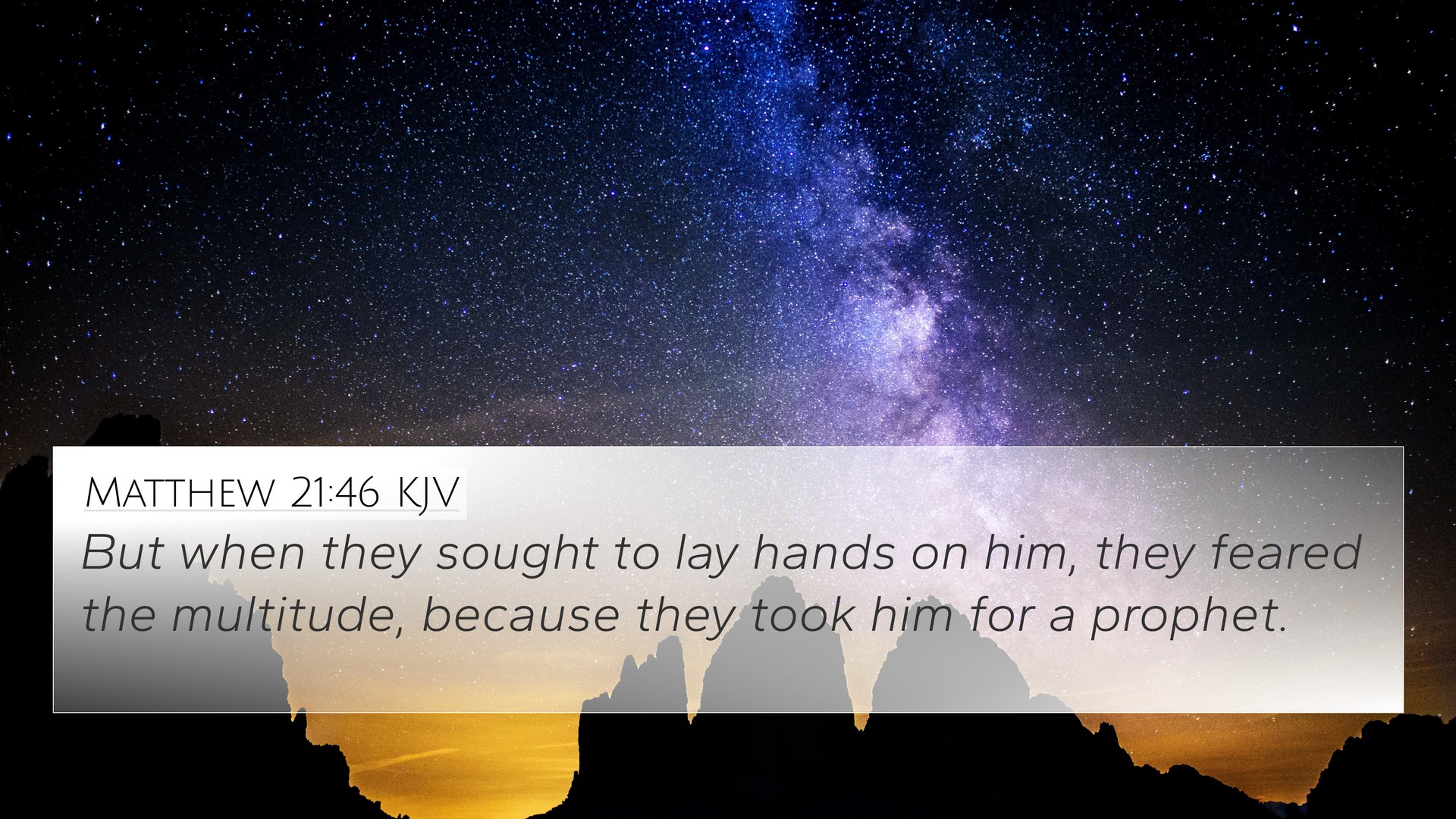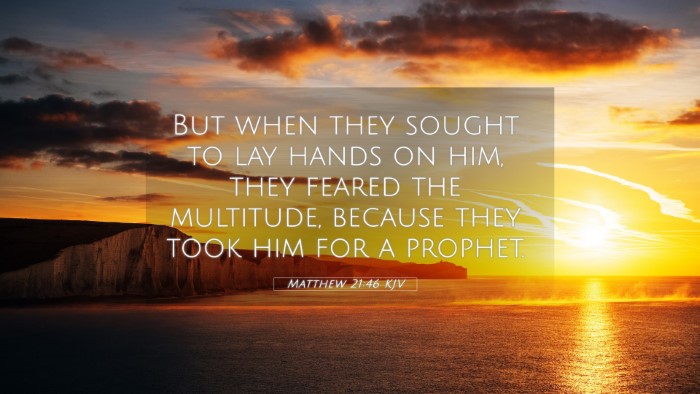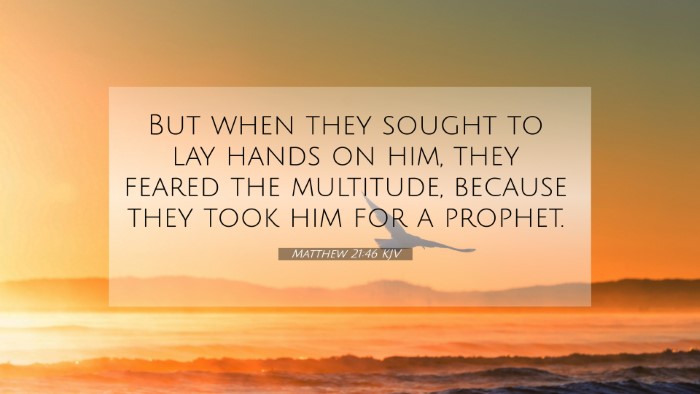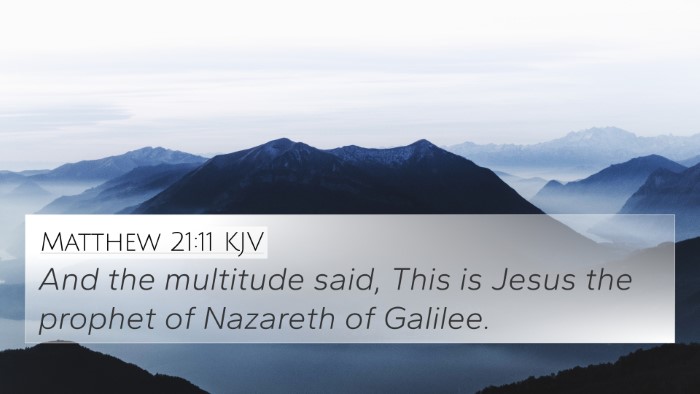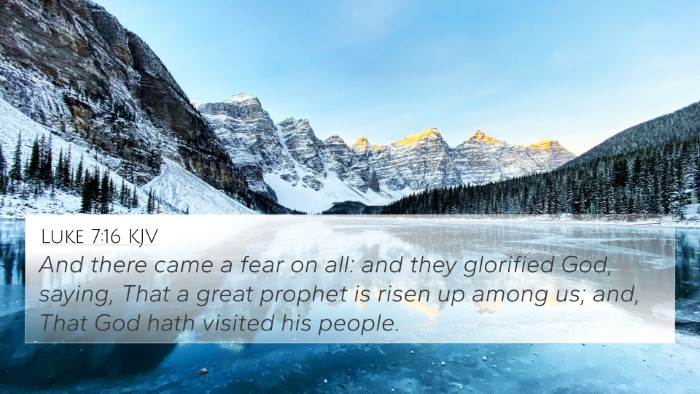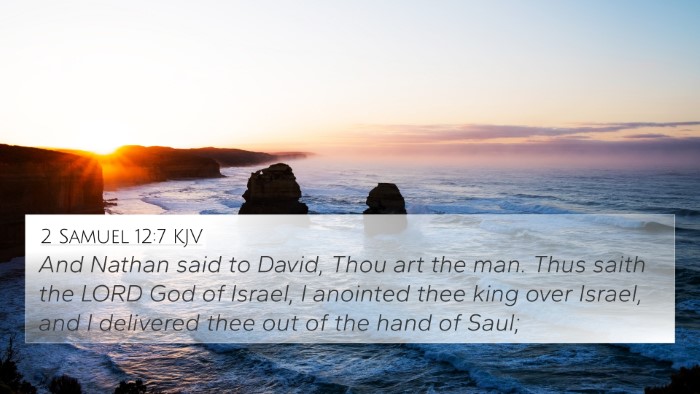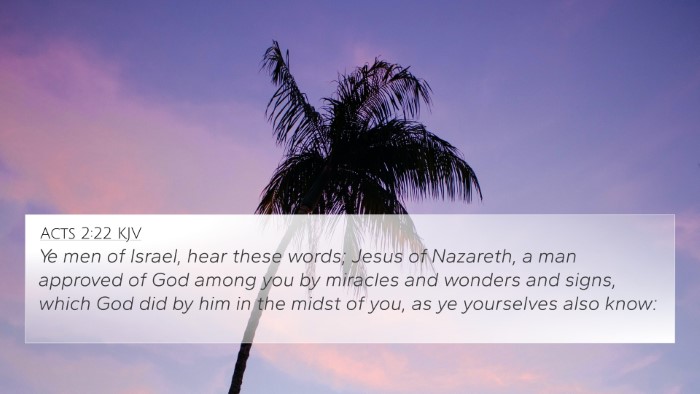Understanding Matthew 21:46
In Matthew 21:46, we encounter a profound moment during Jesus' ministry where His parables directly challenge the religious leaders of His time. This verse states, "But when they sought to lay hands on him, they feared the multitude, because they took him for a prophet." This passage not only reveals the tensions between Jesus and the religious authorities but also indicates the perception of Jesus among the people.
Summary of Insights from Commentaries
Commentators like Matthew Henry, Albert Barnes, and Adam Clarke provide valuable interpretations of this verse. Henry emphasizes the fear of the religious leaders, who are hesitant to act against Jesus because of the people's admiration for Him. Barnes notes that the actions of the rulers were driven by their awareness that Jesus was regarded as a prophet, which gave Him considerable influence. Clarke adds that the fear of the multitude demonstrates the leaders’ recognition of their precarious position in opposing someone so revered.
Thematic Analysis
Thematically, this verse addresses the conflicts between prophetic truth and institutional authority. It illustrates the recurring Biblical theme of divine authority being at odds with human institutions. The fear exhibited by the leaders signifies the power of public opinion and the protective nature of those who seek true revelation from God.
Cross-Referencing Biblical Texts
Matthew 21:46 can be cross-referenced with various other Bible verses to gain a deeper understanding of its meaning. Some key cross-references include:
- Matthew 23:37 - Jesus laments over Jerusalem, indicating the rejection of prophets.
- Luke 13:34 - Another lament that shows the historical pattern of killing prophets.
- John 7:25-27 - The crowd’s division concerning who Jesus is.
- Matthew 21:15-16 - The chief priests' anger at the children’s praise of Jesus as a prophet.
- Mark 12:12 - The fear of the Pharisees about the people's regard for Jesus.
- Acts 5:29-32 - The apostles’ insistence on obeying God rather than men.
- Luke 20:19 - The religious leaders want to lay hands on Jesus but fear the people.
- Hebrews 11:32-38 - A summary of how prophets and people of faith were often mistreated.
- Isaiah 53:3 - Prophetic insight into the suffering servant rejected by men.
- Jeremiah 26:8-9 - The fate of those who speak God’s words to a rebellious people.
Connections to Broader Biblical Themes
This verse is pivotal in understanding the larger narrative of the Gospels, specifically the challenges faced by Jesus due to His prophetic identity. It propels the reader to explore the links between Old Testament prophecies and New Testament realities. The tension portrayed in Matthew 21:46 echoes throughout Scripture, highlighting themes such as:
- Opposition to divine revelation - Many prophets encountered hostility from those in power.
- Fear of retribution - Authorities often fear backlash from the people when confronting prophets.
- The significance of public perception - How the masses view religious figures affects their treatment.
- God's sovereign protection over His messengers - Despite opposition, God's prophets fulfill their calling.
- The prophetic burden - The weight of delivering God's message often leads to hardship.
Practical Applications
When studying Matthew 21:46, believers are encouraged to reflect on the implications of prophetic voices in their own lives. Consider the following applications:
- Assess your view of authority - Are you influenced by public opinion or grounded in biblical truth?
- Courage to speak truth - Seek the boldness to share God’s messages despite possible opposition.
- Respect for prophetic figures - Recognize and support those who deliver God’s messages today.
- Awareness of cultural trends - Be cautious of how societal views may shape your beliefs.
Conclusion
Matthew 21:46 stands as a vital statement on the interactions between Jesus and religious authorities. The insights drawn from respected commentaries enhance our understanding of the text, while cross-referencing with related scriptures uncovers the profound connections within the Bible. By comprehensively analyzing this verse, we not only grasp its immediate context but also recognize its place within the overarching narrative of Scripture.
